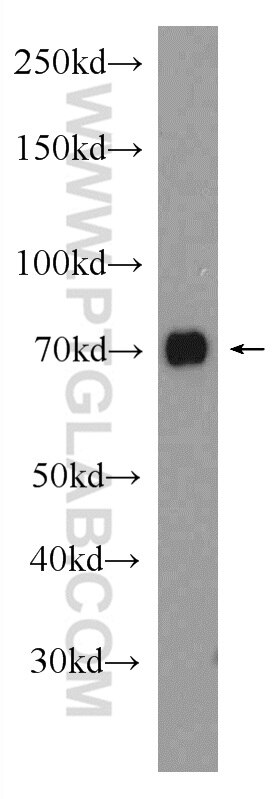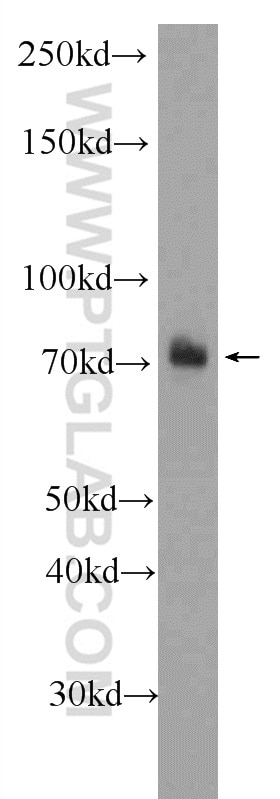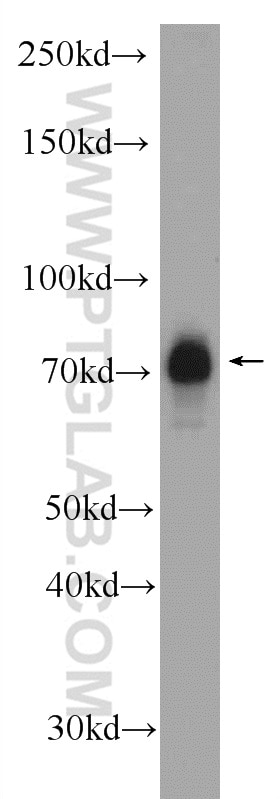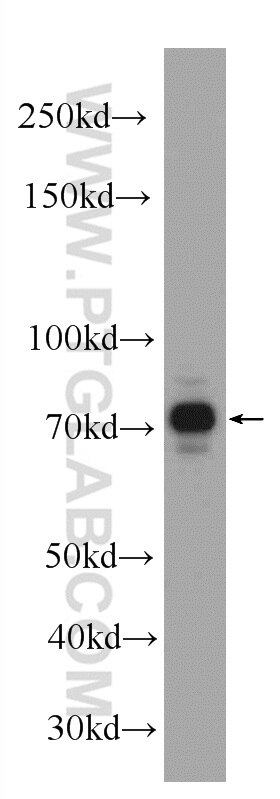Tested Applications
| Positive WB detected in | HeLa cells, Jurkat cells, PC-3 cells |
Recommended dilution
| Application | Dilution |
|---|---|
| Western Blot (WB) | WB : 1:500-1:3000 |
| It is recommended that this reagent should be titrated in each testing system to obtain optimal results. | |
| Sample-dependent, Check data in validation data gallery. | |
Published Applications
| WB | See 1 publications below |
Product Information
20981-1-AP targets NR2C2 in WB, ELISA applications and shows reactivity with human, mouse samples.
| Tested Reactivity | human, mouse |
| Cited Reactivity | human |
| Host / Isotype | Rabbit / IgG |
| Class | Polyclonal |
| Type | Antibody |
| Immunogen |
Peptide Predict reactive species |
| Full Name | nuclear receptor subfamily 2, group C, member 2 |
| Calculated Molecular Weight | 65 kDa |
| Observed Molecular Weight | 70 kDa |
| GenBank Accession Number | NM_003298 |
| Gene Symbol | NR2C2 |
| Gene ID (NCBI) | 7182 |
| RRID | AB_2878781 |
| Conjugate | Unconjugated |
| Form | Liquid |
| Purification Method | Antigen affinity purification |
| UNIPROT ID | P49116 |
| Storage Buffer | PBS with 0.02% sodium azide and 50% glycerol, pH 7.3. |
| Storage Conditions | Store at -20°C. Stable for one year after shipment. Aliquoting is unnecessary for -20oC storage. 20ul sizes contain 0.1% BSA. |
Background Information
NR2C2, also named as TAK1, TR4 and TR2R1, belongs to the nuclear hormone receptor family and NR2 subfamily. NR2C2 is an orphan nuclear receptor. It may regulate gene expression during the late phase of spermatogenesis. The antibody is specific to NR2C2.
Protocols
| Product Specific Protocols | |
|---|---|
| WB protocol for NR2C2 antibody 20981-1-AP | Download protocol |
| Standard Protocols | |
|---|---|
| Click here to view our Standard Protocols |










